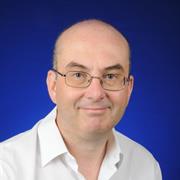The realisation that typically inert carbon-fluorine bonds may be readily cleaved by certain organometallic complexes has profound consequences for the chemistry of fluorocarbons and organometallics. The results have provide possible synthetic routes to important selectively fluorinated compounds with potential pharmaceutical, agrochemical and specialised applications.
Congratulations to Hayden Thomas who has successfully completed his PhD oral defence. Hayden's PhD research was supervised by Associate Professor Graham Saunders, with his thesis entitled: Synthesis and Reactions of Iridium(III) and Rhodium(III) Piano-stool Complexes of NHC Ligands Bearing Fluorinated Substituents.
Hayden'ts PhD research involved the syntheses of rhodium and iridium 'piano stool' complexes containing new fluorinated N-heterocycle carbene ligands. Treatment of these with silver particles led to carbon-fluorine bond fission, generating cyclic complexes. Treatment with silver oxide led to complexes of novel chelating linked ligands, which have subsequently been shown to facilitate fluorination reactions. Characterization of some of the complexes involved a trip to ANSTO (Lucas Heights, Sydney) to perform neutron diffraction at the OPAL nuclear reactor.
Hayden had the opportunity to present his PhD research at the following conferences:
- 23rd ACS Winter Fluorine Conference (Tampa, 2017)
- OZOM10 (Dunedin, 2017)
- NZIC conference (Christchurch, 2019)
- RACI Inorganic19 conference (Wollongong, 2019)

Associate Professor